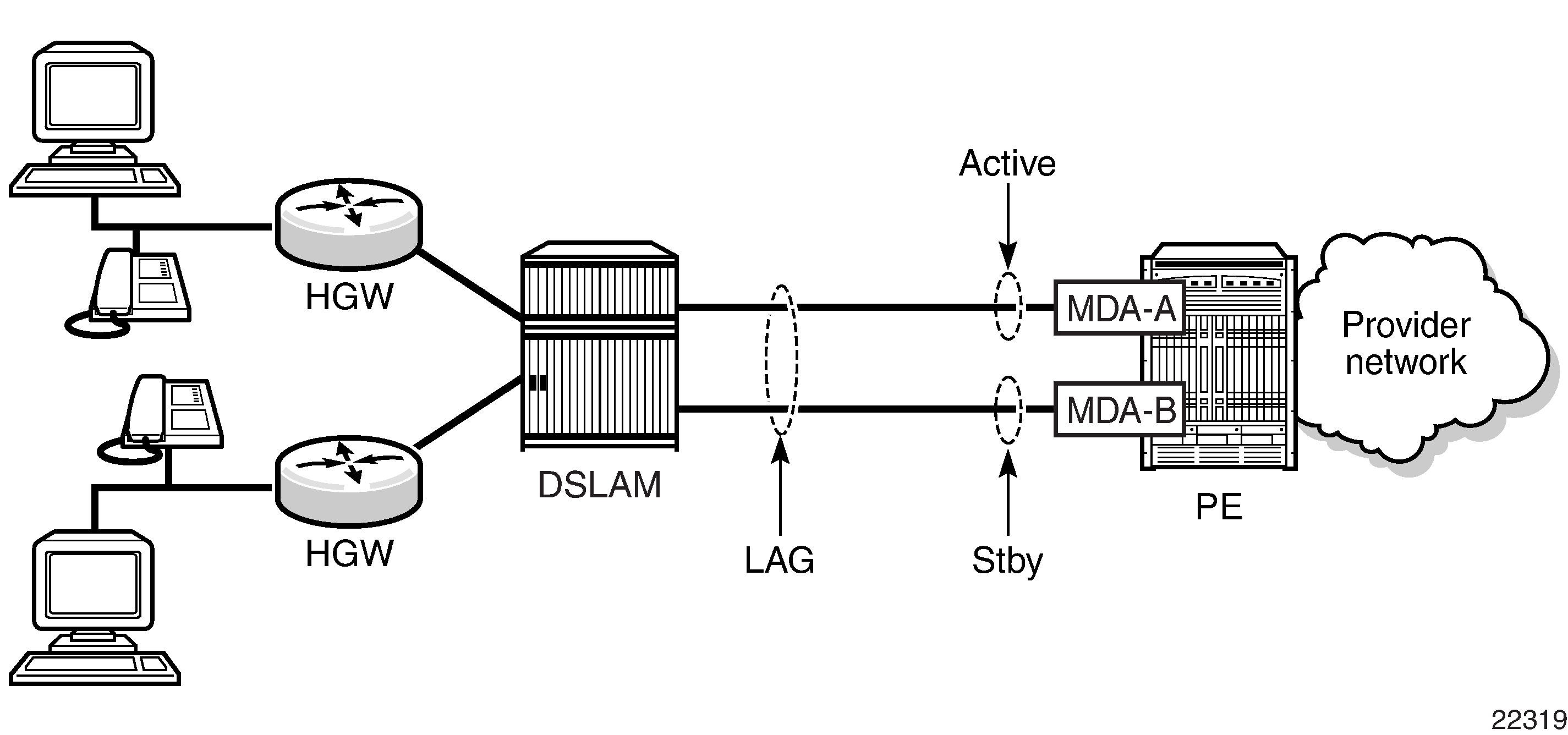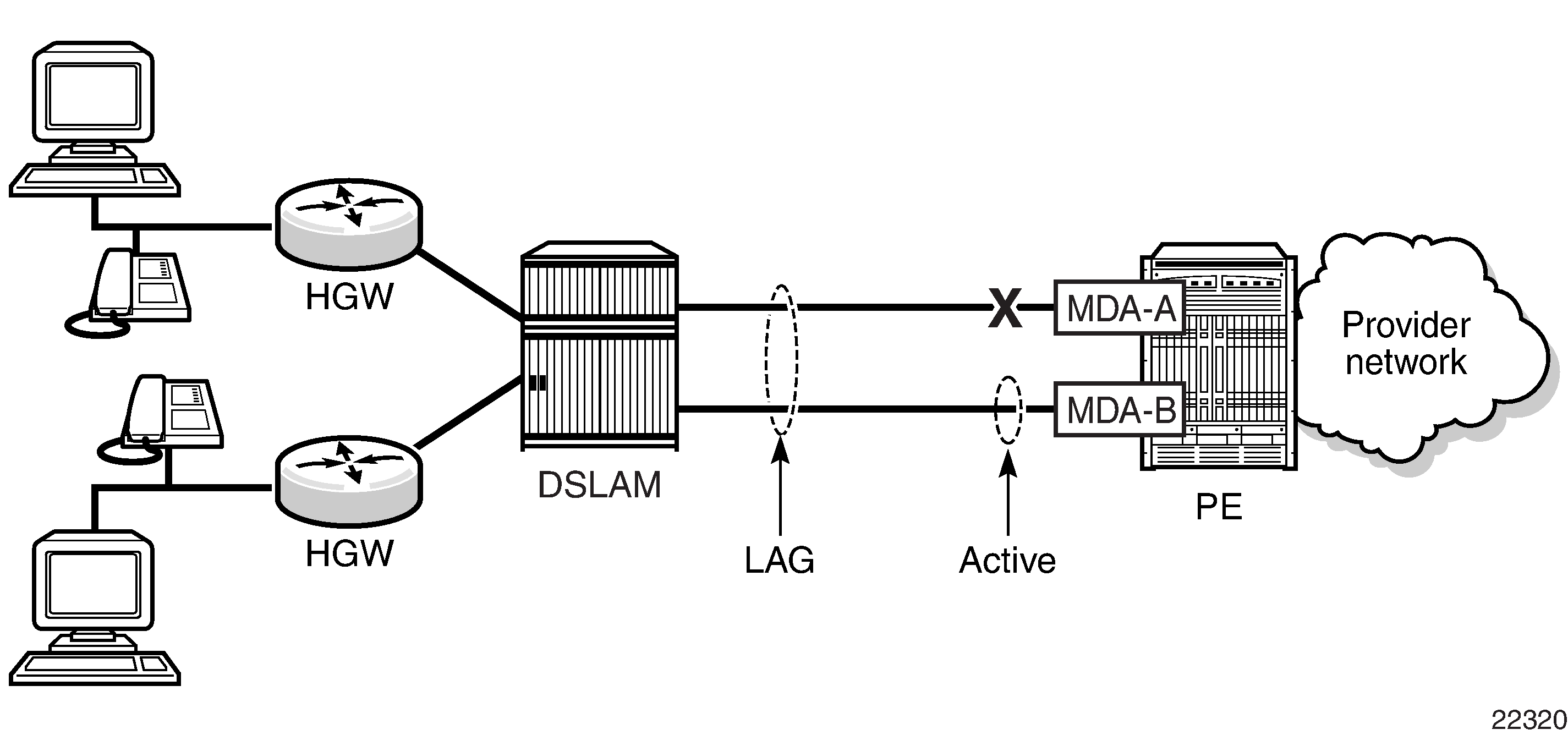On access, network, and hybrid ports, where multiple links in a LAG can be active at the same time, normal operation is that all non-failing links are active and traffic is load-balanced across all the active links. In some cases, however, it is desirable to have only some of the links active and the other links kept in standby mode. The Link Aggregation Control Protocol (LACP) is used to make the selection of the active links in a LAG predictable and compatible with any vendor equipment. The mechanism is based on the IEEE 802.1ax standard so that interoperability is ensured.
LACP cannot be configured for static LAG. For more information on static LAG, see Static LAG (Active/Standby LAG Operation without LACP).
LACP is disabled by default and therefore must be enabled on the LAG if required. LACP can be used in either active mode or passive mode. The mode must match with connected CE devices for proper operation. For example, if the LAG on the 7705 SAR end is configured to be active, the CE end must be passive.
Figure: LAG on Access Interconnection shows the interconnection between a DSLAM and a LAG aggregation node. In this configuration, LAG is used to protect against hardware failure. If the active link goes down, the link on standby takes over (see Figure: LAG on Access Failure Switchover). The links are distributed across two different adapter cards to eliminate a single point of failure.


LACP handles active/standby operation of LAG subgroups as follows.
Each link in a LAG is assigned to a subgroup. On access, network, and hybrid ports, a LAG can have a maximum of four subgroups and a subgroup can have up to the maximum number of links supported for the LAG. The selection algorithm implemented by LACP ensures that only one subgroup in a LAG is selected as active.
The algorithm selects the active link as follows.
If multiple subgroups satisfy the selection criteria, the subgroup currently active remains active. Initially, the subgroup containing the highest-priority (lowest value) eligible link is selected as active.
An eligible member is a link that can potentially become active. This means it is operationally up, and if the slave-to-partner flag is set, the remote system did not disable its use (by signaling standby).
The selection algorithm works in a revertive mode (for details, refer to the IEEE 802.1ax standard). This means that every time the configuration or status of a subgroup changes, the selection algorithm reruns. If multiple subgroups satisfy the selection criteria, the subgroup currently active remains active. This behavior does not apply if the selection-criteria hold-time parameter is set to infinite.
Log events and traps are generated at both the LAG and link level to indicate any LACP changes. See the TIMETRA-LAG-MIB for details.